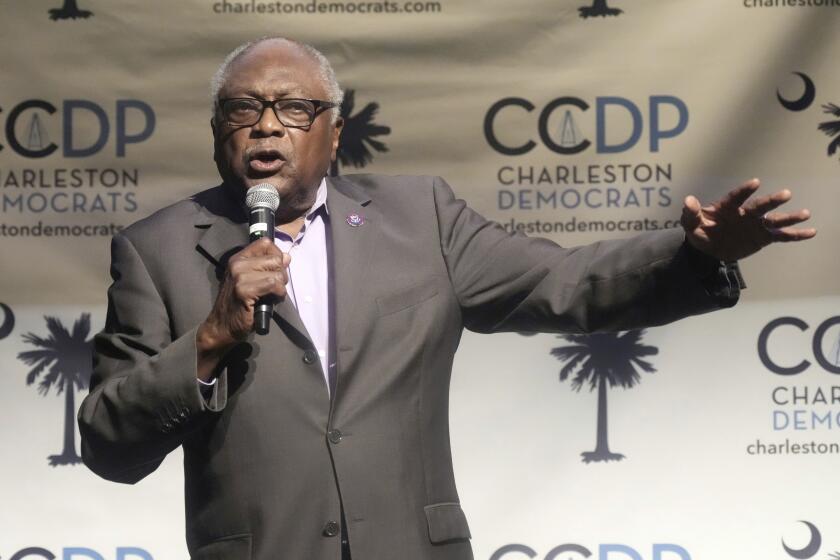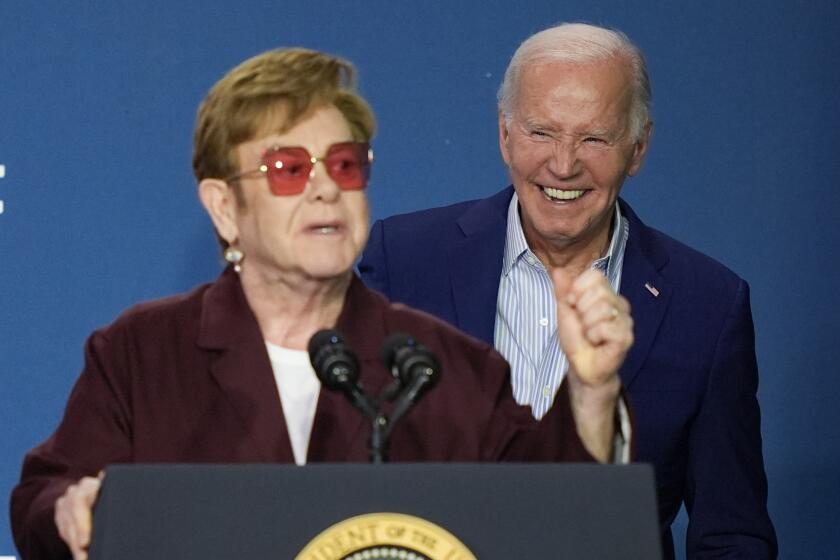Retiree Helps Turn Drill Instructors Into Teachers
Two years ago, Jack Hexter had an idea and, at age 81, wandered into the political process. Now Hexter’s idea is a law that might make a difference to some former soldiers and some kids in need of a role model.
The idea was born as Hexter watched with admiration the demeanor of American forces during the Persian Gulf War--”those poor bastards were out in the desert with nothing to drink but water, no girls, nothing to do for months.” What, he wondered, was going to happen to all those noncommissioned officers when the services reduced their ranks?
The Army is cutting down from 762,000 people three years ago to under 400,000 in a few years. A lot of people will be looking for work in midlife.
What many sergeants mostly do--and do well--Hexter reasoned, is to train young people, taking often aimless 18-year-olds and giving them discipline and self-respect.
If they can do it for teen-agers in uniform, he told himself, they could do it just as well for their brothers and sisters in poor schools in inner cities, in the hills of Appalachia, in impoverished communities in every state. Those schools often have trouble finding male teachers who can set an example for boys.
Hexter, a retired history professor, took his idea to his old boss, William Danforth, chancellor of Washington University.
“He said: ‘That’s a wonderful idea; carry it as far as you can,’ ” Hexter recalled.
So Hexter presented his idea in a paper to the American Philosophical Society. He researched it. He wrote opinion pieces for the St. Louis Post-Dispatch. He traveled to Washington to call on William Danforth’s brother, John, a Republican senator from Missouri.
Those who saw him speak of his persistence. They even may have come to dread his phone calls. Hexter’s idea became Hexter’s obsession.
Often in Washington, a senator deals with a situation like this by having a bill drafted. The bill goes nowhere, but the legislator tells the constituent he tried.
But Hexter’s idea caught Danforth’s imagination. The senator turned the professor over to a young legislative aide, Jeff Ballabon. Make it happen, he instructed.
Ballabon found that a “Troops to Teachers” law had passed in 1992 to help mustered-out service people win teaching certification. But the law had never been funded. And, he found, it would have locked out 96% of noncommissioned officers because they lack college degrees, as the program required.
So Ballabon drafted an amendment. If ex-soldiers earn a college degree (the GI Bill helps here), they would be eligible for stipends of up to $5,000 to allow them to become certified as teachers.
And to make sure there would be jobs for them, the amendment provided that schools with high enrollments of poor youngsters would get an inducement--$50,000 in subsidies for the first five years of the teachers’ salaries.
Congress was on its August recess. Ballabon lobbied committee staffs in the Senate and the House. He placed a strategic phone call to a friend who worked in the office of Colin L. Powell, then chairman of the Joint Chiefs of Staff.
He networked; it worked. When Congress returned, Danforth introduced the amendment. It passed the Senate in less than 20 minutes and survived the rest of the congressional process.
Congress appropriated $65 million.
“The final acknowledgment for this amendment,” Danforth told the Senate just before the vote, “must go to a distinguished and learned constituent of mine, Dr. J. H. Hexter. . . . He has argued his case elegantly and compellingly to me and to many policy-makers across the country.”
John Gantz is chief of the teacher placement program in an outfit called Defense Activity for Non-Traditional Education Support in Florida. He’ll help administer the new law.
He says he’s gotten about 1,500 applications. Forty percent are coming from noncommissioned officers--Hexter’s sergeants, with no skills to offer except the ability to mold kids.
More to Read
Get the L.A. Times Politics newsletter
Deeply reported insights into legislation, politics and policy from Sacramento, Washington and beyond. In your inbox three times per week.
You may occasionally receive promotional content from the Los Angeles Times.






